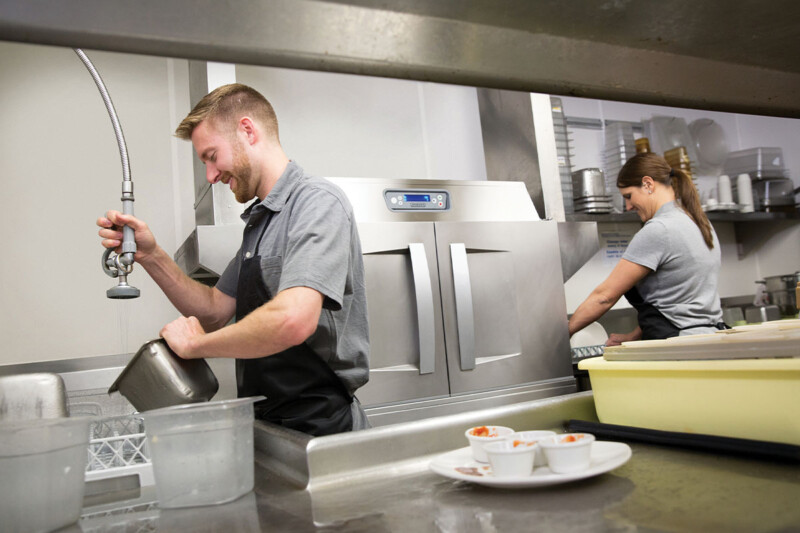Hot/Cold Drop-In Wells Offer Two in One
Equipment lets operators switch temperature modes, offering versatility in a single footprint.
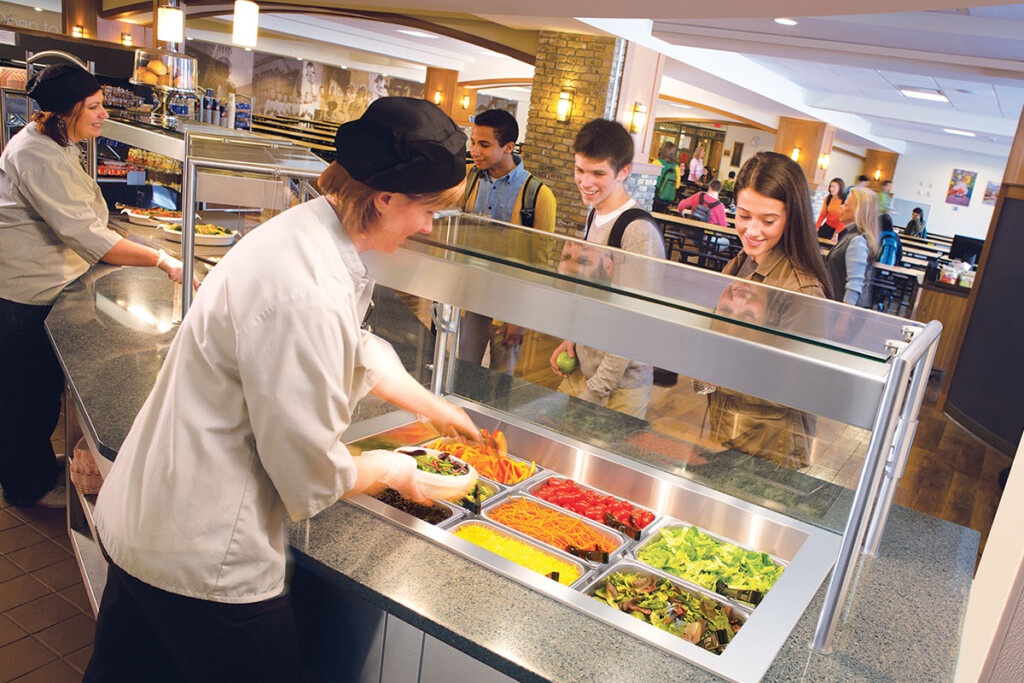
Picture a university dining hall that wants to serve sushi at its Asian station on Monday and hot Chinese food on Tuesday. Or, imagine a hotel that wants to serve chilled items like fruit salad and yogurt on its breakfast buffet and offer warm quesadillas and chicken wings on its happy hour buffet. These operators could purchase drop-in wells that hold food hot and separate wells that maintain cold temperatures. But if they want more versatility with less equipment, they might specify drop-in wells that can change between hot and cold modes. For even more flexibility, they could select a model in which each well is individually temperature controlled, allowing hot and cold items to sit side by side.

Certain models come with NSF-4 and NSF-7 certification for hot and cold operation. Courtesy of Delfield.

A lifting ring boosts safety when changing pans in a hot well. It also makes it easier to carry full pans of food. Courtesy of G.A. Systems.
Holding food at the proper temperature is key to retaining food quality and ensuring food safety. Temperature-controlled serving wells keep food out of the “danger zone,” 41°F-135°F, where bacteria thrive. Hot/cold drop-in wells, or combination wells, give operators the flexibility to safely serve warm or chilled items, all in the same footprint.
FLIP OF A SWITCH
Of course, flexibility comes at a price. Hot/cold drop-in wells are more expensive than one-mode wells, so examine your menu to determine whether you require this versatility. Consider future menu changes and expansion plans. This equipment can help operators “future proof” for changes down the road, letting them repurpose the equipment as needed, notes one manufacturer.
Combination units are popular in segments with menus that change daily; K-12, college and university, hospital, and B&I serveries mark a few examples. Operators whose needs shift from daypart to daypart are another market for this equipment. Fully transitioning from one mode to another generally takes an hour or less, allowing a lunchtime salad bar to transform to a hot dinner buffet. Compare transition times from one model to another; one maker reports the shift can take place in as little as 15 minutes.
It’s no surprise that the use of this equipment for self-service buffets declined during the height of the pandemic. In turn, demand rose for flexible food shields that allow serving stations to convert from self-service to full-service, notes one manufacturer. Manufacturers also noted increased demand for this equipment for delivery-order assembly lines, including those that can adapt to the needs of different virtual concepts.
Refer to your menu and sales volume to determine how large of a unit you need. One- to six-well units are available. Not every maker offers each size. Each well holds a standard hotel pan; fractional pans can be combined for use in one well by using adapter bars. Some makers offer a slimline option, flipping the orientation of the wells.
Compare transition times from one model to another; the shift can take place in as little as 15 minutes.

Some manufacturers offer dry operation (versus wet) of hot wells. Courtesy of LTI.
Specify whether you need each well to operate individually, allowing hot and cold items to sit side by side—a more expensive option—or if it’s sufficient to have the wells shift modes as a group. For example, a fast-casual restaurant with a burrito makeline might opt for individually controlled wells, using two wells to keep proteins warm and another two to keep salsa and other toppings chilled. This reduces their equipment footprint, requiring less space than a two-well cold unit next to a two-well hot unit. One manufacturer noticed increased demand among convenience stores purchasing this equipment to fit taco bars into small spaces.
Specify whether you need each well to operate individually or if it’s OK to have them shift temperature modes as a group.
CONTROLLING TEMPERATURES
To ensure that the equipment meets industry standards, look for units that are NSF-4 certified for hot holding and NSF-7 certified for refrigeration. Determine how much control you need over the temperature. Some units are binary—hot or cold—while others can be more precisely temperature adjusted, sometimes in one mode but not the other.
The cold mode typically uses a compressor and a condenser with refrigerant. Some manufacturers use R-404A or 134a refrigerants, which have high-level and medium-level Global Warming Potential, respectively. Other manufacturers have updated to more eco-friendly refrigerants like R-513A, which has a relatively low GWP, or R-290, which has an even lower GWP. These eco-friendly refrigerants are more energy-efficient, which could reduce your electricity bill.
In the hot mode, most units use wet heat to maintain proper holding temperature. At least one manufacturer offers dry-heat operation, saving employees the hassle of filling and draining units. Another maker plans to release a dry-operation hot/cold/frozen unit this summer.
For wet-heat units, switching to the hot mode requires adding about an inch of water in the well’s bottom—be sure to follow the manufacturer’s specific instructions. Drain the water before switching to the cold mode, otherwise the liquid will freeze, expand and potentially damage the well. To prevent this problem, some models feature an auto-drain option. When the unit is switched from hot to cold, the valve automatically opens and the water is drained. Other makers have opted against this feature, which they say could lead to accidental drainage if someone mistakenly hits the switch.
Some manufacturers offer an auto-fill option, which fills the unit with the required amount of water and replenishes it as needed, assuming the equipment is connected to a water line. This maintains the appropriate water level to ensure proper hot-holding temperatures. If you’re using manual fill, check the water level periodically—one manufacturer recommends every two hours—and add hot water as needed, using a hose attachment or a bucket of water.
SETTING UP FOR SUCCESS
Keep these factors in mind as you install your hot/cold drop-in wells:
CABINETRY AND COUNTERTOPS. Make sure the cabinet has heavy-duty construction to support your drop-in wells filled with food. Be sure to leave space for food shields. Some makers sell complete serving counters with embedded wells.
FOOTPRINT. Hot/cold wells may measure a few inches wider than a single-mode unit because of the additional components. Individually controlled wells require sufficient insulation between wells; this insulation also increases the footprint slightly. For a new construction project, you can specify the exact size of counters needed. For a retrofit, you may need a redesign or to cut into counter space to make room for these larger units.
ELECTRICITY: Electrical requirements can differ per unit. For example, one manufacturer requires 120/208-240V on its four-well unit, but offers the option of 120V on smaller units. Check whether the equipment needs to be hardwired or whether it offers quick-and-easy plug-in—some makers offer either as an option.

One of Auburn University’s dining halls features hot/cold drop-in wells, along with single-temperature drop-in wells. Courtesy of Vollrath.
DRAINAGE: Some jurisdictions require a floor drain beneath any equipment with a built-in drain. In other locales, you may be able to drain into a bucket, but keep in mind that the water may be hot. “We strongly suggest connecting it to a drain,” urges one manufacturer.
WATER LINE: Auto-fill models must be hard plumbed to allow access to water. Again, this is easier to plan for with new construction than a retrofit.
VENTILATION: Follow the manufacturer’s instructions about clearance and venting requirements to prevent the compressor from overheating. Crews may need to install louvers in surrounding cabinetry to ensure adequate ventilation.
ALL’S WELL THAT ENDS WELL
Operate your hot/cold drop-in wells according to instructions and clean them regularly to lengthen their life, which manufacturers estimate at seven to 15 years. If your equipment uses a wet mode, drain the water every day and wipe the wells to avoid rust and lime buildup. Clean the compressor coils occasionally to avoid dust accumulation. And, always remember that food must be at the proper temperature when placed in a well—these units are designed to hold foods at a temperature, not to heat or chill them.
Best of Both Worlds
Switch holding temperatures to meet menu demands using the following hot-cold drop-in wells—all available as standalone models.
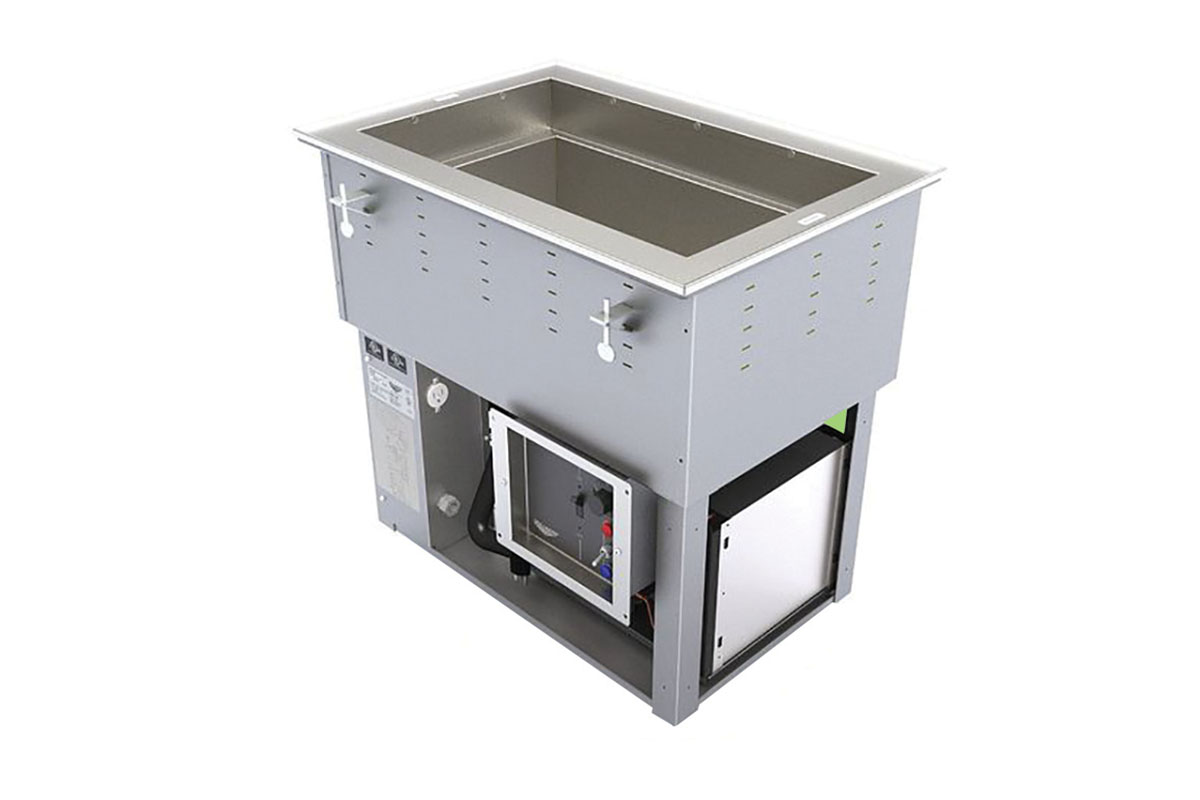
Vollrath
MODEL: Combination Hot & Cold Drop-Ins
NO. OF PANS: 1 to 4
INDIVIDUALLY CONTROLLED: Yes
WEBSITE: vollrath.com
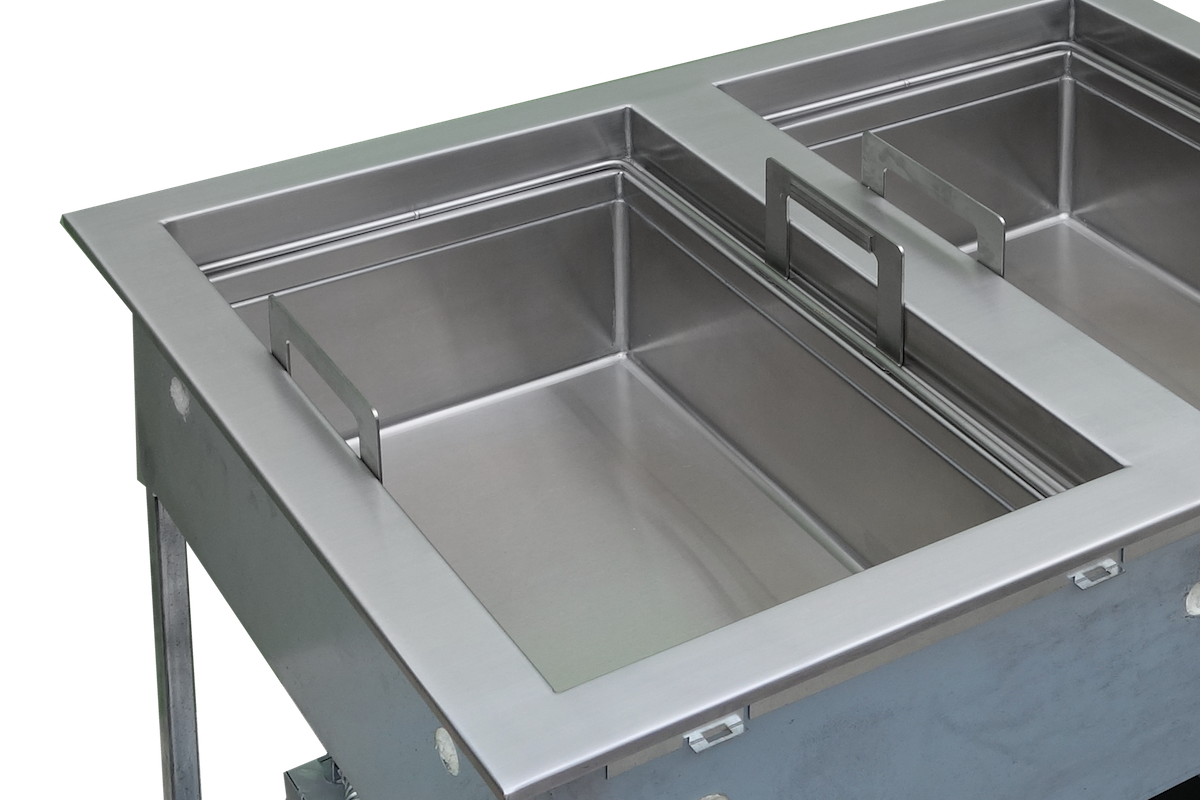
G.A. Systems
MODEL: Hot Cold Dual Operation Drop-In
NO. OF PANS: 1 to 5
INDIVIDUALLY CONTROLLED: Yes
WEBSITE: gasystemsmfg.com
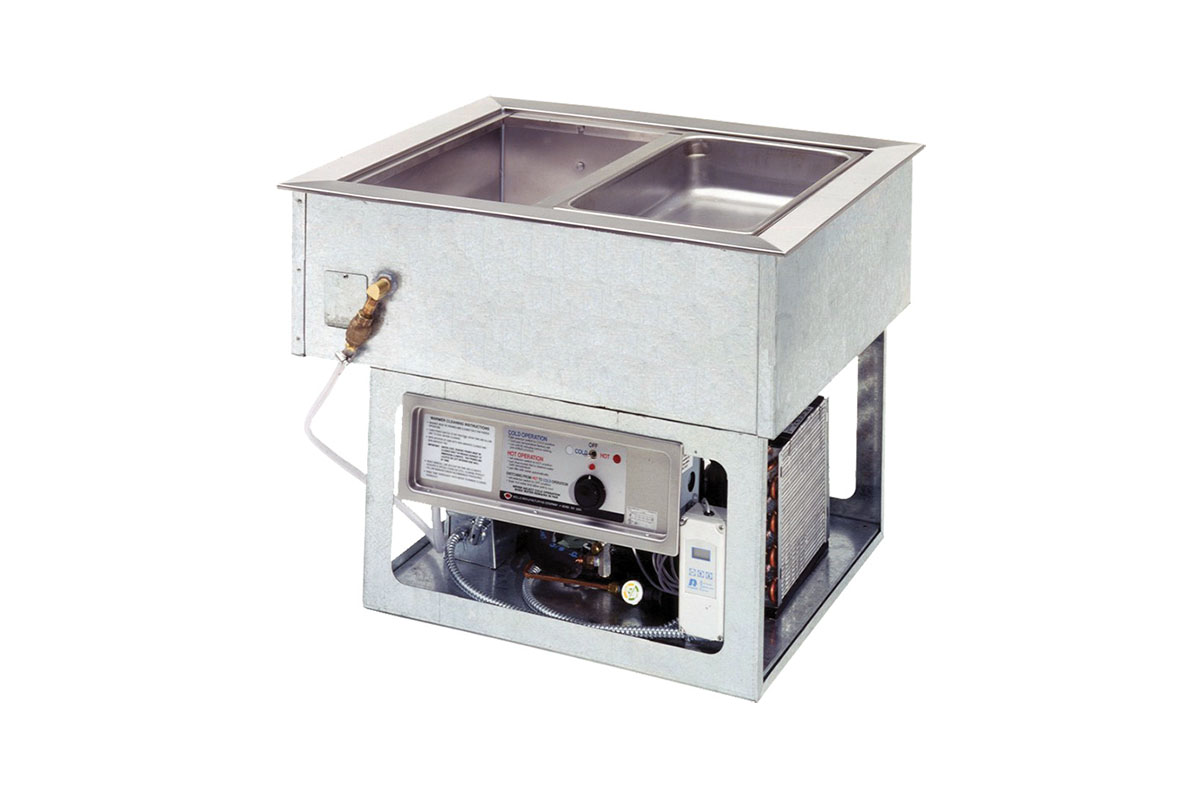
Wells
MODEL: Dual Temperature NSF-7 Hot & Refrigerated Cold Pans
NO. OF PANS: 1 to 6
INDIVIDUALLY CONTROLLED: No
WEBSITE: wells-mfg.com
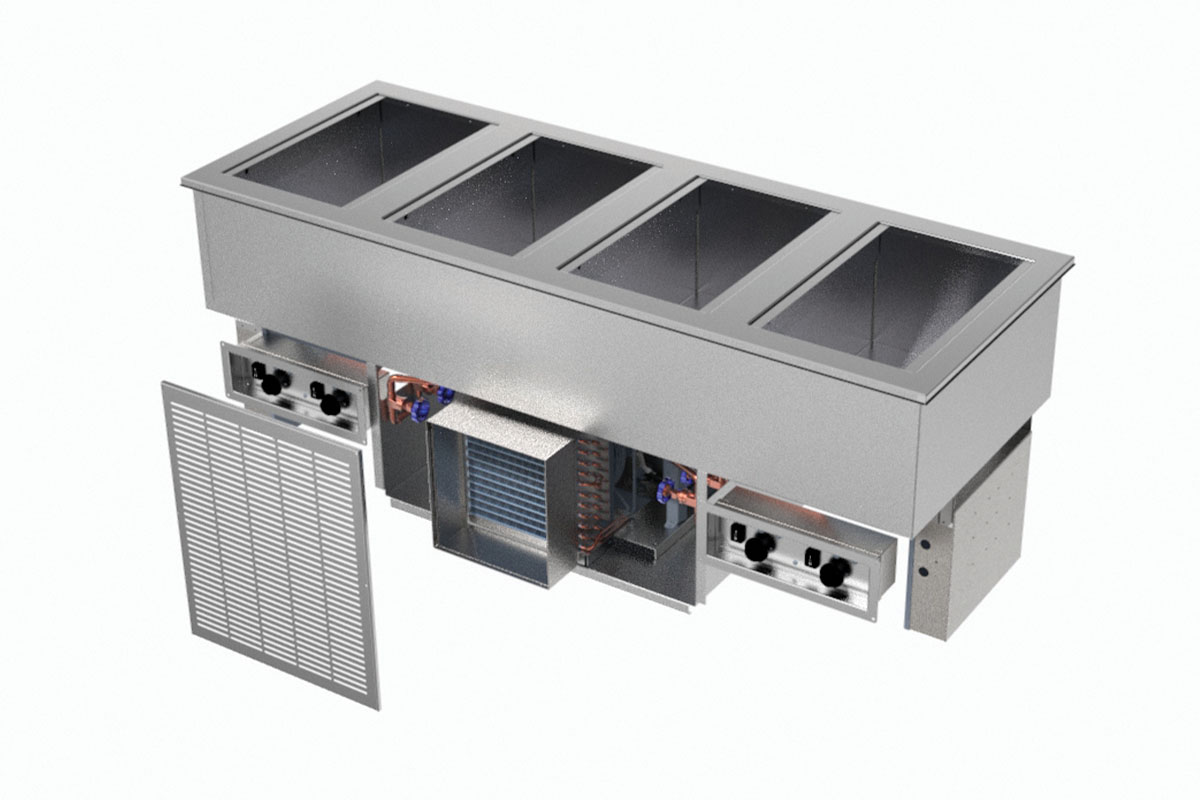
Delfield
MODEL: N8600-FWP FlexiWell
NO. OF PANS: 1 to 6
INDIVIDUALLY CONTROLLED: Yes
WEBSITE: delfield.com
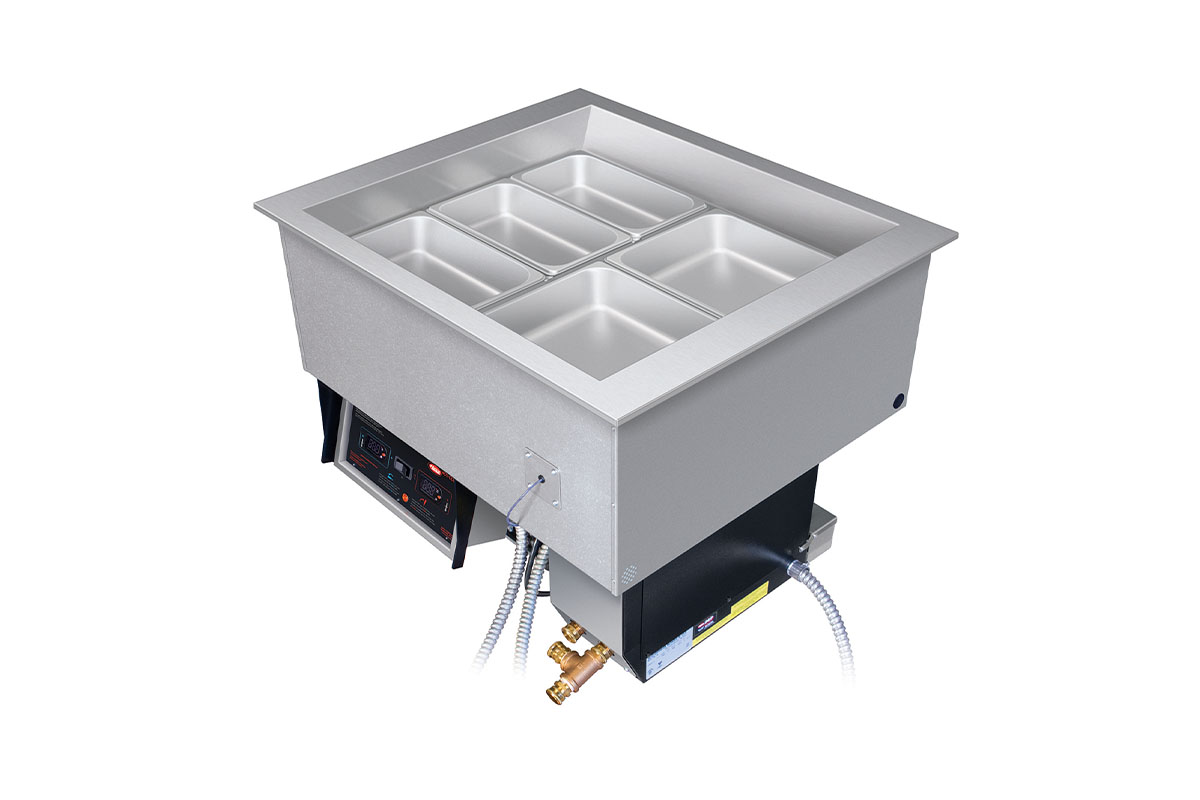
Hatco
MODEL: Drop-In Hot/Cold Wells
NO. OF PANS: 2 to 6
INDIVIDUALLY CONTROLLED: No
WEBSITE: hatcocorp.com
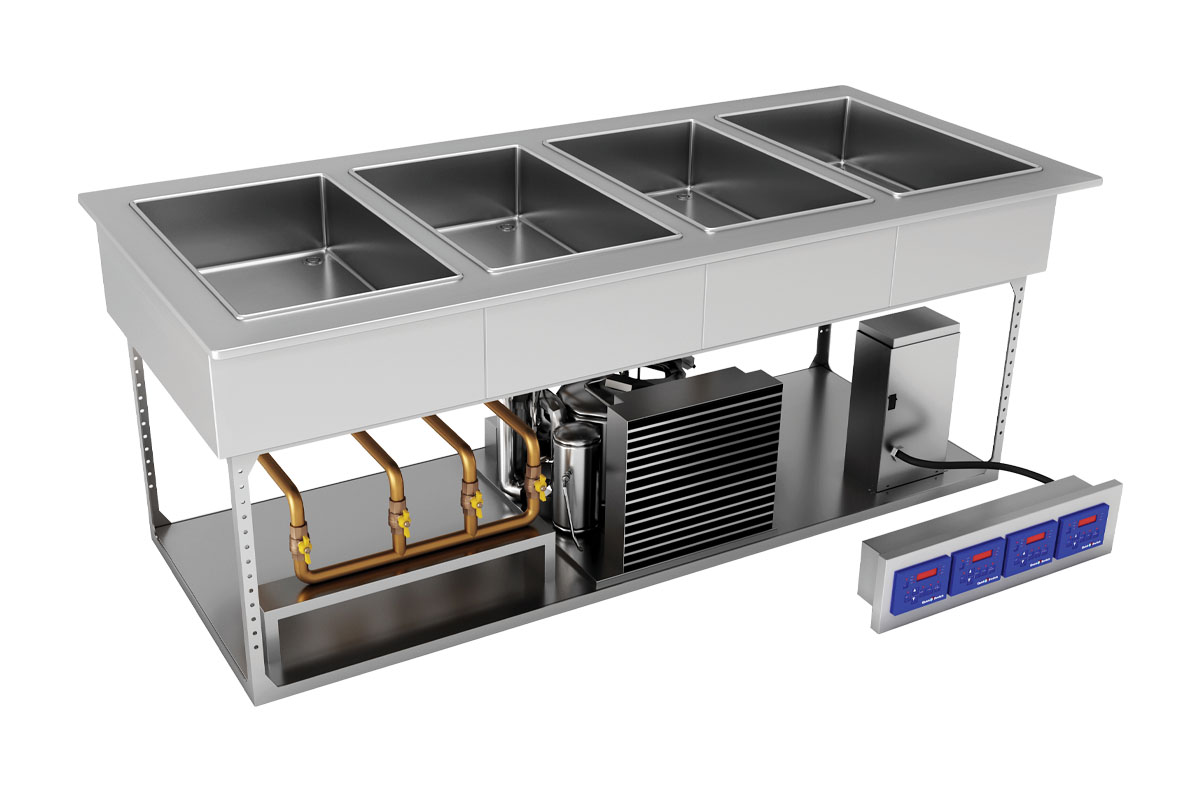
LTI
MODEL: QuickSwitch Hot/Cold/Freeze Drop-Ins
NO. OF PANS: 1 to 4
INDIVIDUALLY CONTROLLED: Yes
WEBSITE: lowtempind.com
RELATED CONTENT
- Advertisement -
- Advertisement -
- Advertisement -
TRENDING NOW
- Advertisement -
- Advertisement -
- Advertisement -


